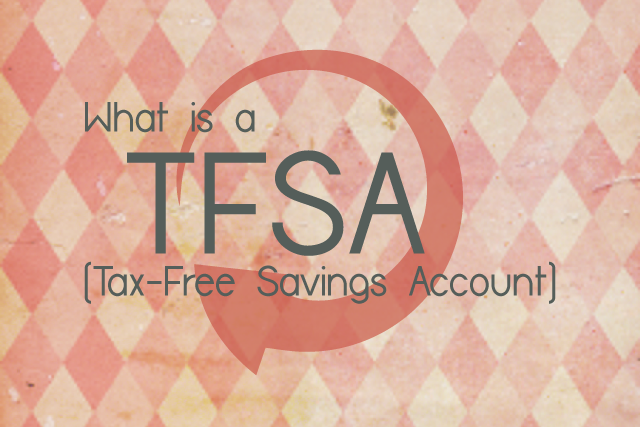A few years ago, my parents urged me to read a book on personal finance: The Wealthy Barber. The book would teach me about money, they said. I wasn’t interested; as far as I was concerned, I wasn’t making money at the time and didn’t have any to save much less invest. RRSPs, RRIFs, RESPs and GICs were just a jumble of alphabet soup sloshing around in a bowl at the back of my mind. I told my parents I’d figure it out when I needed to. Well, that day came and went a while ago. Told you so’s aside, I do wish that I had gotten my sorry behind in gear and read the book a little earlier.
In the spirit of financial literacy month (seems like there’s a month for everything doesn’t it?) in Canada, let’s take a step back and cover some things that may not seem interesting but will be useful when that moment of reckoning comes. With fresh start and a clean slate, who knows, maybe we’ll learn a new thing or two.
First up: Tax-Free Savings Account basics.
The Beginner’s Guide to the TFSA
What is a Tax-Free Savings Account?
The Tax-Free Savings Account (TFSA) was introduced in 2008 as flexible registered savings vehicle. Simply put, the TFSA is a savings account where investment income is not taxed- no taxes on interest gains and no taxes when money is taken out. TFSAs can be opened at any bank and also at investment brokerages.
The Ground Rules
The TFSA is a registered account. All that means is there are ground rules set by the Canada Revenue Agency (CRA) to abide by; the rules are as follows:
- You must be a Canadian Resident and at least 18 years old to open a TFSA account.
- There is a cap as to how much you can put in the account each year. If the cap is exceed, you get dinged with a penalty.
- If you don’t put anything in, you can put more the following year. Unused contribution room is carried forward.
- If you take money out, the amount withdrawn is added to your contribution room for the next year. You can add it back on January 1st of the next calendar year.
- Money in the account can be transferred to a spouse or common-law partner upon death. Tax free.
Keep in mind that you can open as many TFSA accounts as you like, but your contribution limit will not be affected by how many accounts are opened.
Contribution Limits: How much money can I put in?
From 2009-2012, the annual contribution limit was set at $5000. In 2013, the limit was increased to $5500 (reason for the increase: the limit was indexed to inflation). As of 2015, the contribution limit is $10,000 per year, no longer indexed to inflation. If you have never contributed to your TFSA before, you can contribute the sum of the previous years contribution limit amounts in 2015 without incurring any penalties:
| Year | Contribution Room |
| 2009 | $ 5,000 |
| 2010 | $ 5,000 |
| 2011 | $ 5,000 |
| 2012 | $ 5,000 |
| 2013 | $ 5,500 |
| 2014 | $ 5,500 |
| 2015 | $ 10,000 |
| Total | $ 41,000 |
In the account, the money can be used to buy qualified investments which include things like stocks, ETFs, GICs and more alphabet soup.
Penalties: What if I put in too much?
With the TFSA, it is possible to save too much. The government will charge a 1% penalty on the amount contributed that exceeds the contribution limit.
For example, assuming I contributed $20,000 to my TFSA between 2009-2012, my contribution limit for 2013 is $5,500. If I contributed $6,500 in 2013, I will have over contributed by $1000. The CRA will charge me 1% of the $1000 over-contribution every month until either:
- The amount over $5,500 ($1000 in this example) is taken out in 2013, or
- January 1, 2014 comes around and the over-contribution amount is absorbed by the unused contribution room for the new year.
Withdrawals: How much money can I take out?
There are no restrictions on how much you can withdraw. The amount taken out is added back to the your contribution room as per rule #4.
Scenario 1: Let’s party like it’s 2009 and let’s say I’ve contributed $5,000 in February of that year. If I take out $2,000 in August, I cannot “restock” my TFSA until 2010 or else I’ll pay a penalty. In 2010, my contribution would be:
| $5,000 | 2010 limit |
| + $2,000 | 2009 withdrawal |
| $7,000 | 2010 contribution room |
Scenario 2: Let’s consider the present. Let’s say I’ve contributed $4000 to my TFSA between 2009-2013. If I withdraw $500 in 2013, my contribution room for 2014 will be:
| $21,500 | 2009-2013 remaining contribution room |
| + $5,500 | 2014 contribution room |
| + $500 | re-contribution of 2013 withdrawal |
| $27,500 | Total TFSA contribution limit through to end of 2014 |
Calculating Contribution Limits: How much room do I have left over?
There are three ways to determine how much contribution room you have in your TFSA but before you start, you’ll need a few pieces of information ready:
- Social Insurance Number;
- Your birthday; and
- Your tax return from the previous year. (e.g. Amount entered on line 101 of your 2012 return)
Once you have them handy, you can access your contribution limit via the following services.
It’s important to note that the limit shown does not include the current year’s contribution as the amount has not yet been reported to the CRA. You’ll have to keep track of that yourself.
Food for thought: Increase TFSA contribution limits through withdrawals
I came across a post from Million Dollar Journey that indicates that you can potentially increase your contribution room for the following year if you withdraw the year’s contribution AND investment gains. If this is in fact true, consider this for example:
Emily contributes $5000 to her TFSA in April 2009 and it grows $100 from interest/investment. Her TFSA account now has $5100 in it. If she withdraws $5100 in October 2009, in January 1, 2010, her contribution room is now $10,100 ($5000 from 2014 and $5100 from 2009).
That’s certainly more than the average bear. Is this a loophole or is this by design?
There’s a link buried within the comments of the Million Dollar Journey post referencing a FAQ from the original 2008 budget that states:
“Any withdrawals made in the previous year would be added to the contribution room for the year.”
Sure, gains from the previous year can be withdrawn, but the statement doesn’t explicitly exclude adding the gains to the current year’s contribution room.
How do you interpret the FAQ? Have you tried withdrawing and then re-contributing your gains?
Bringing it back
The TFSA is a great savings vehicle for those looking to invest their money tax-free. It can be used to save for short and long-term goals. Its flexibility also allows you to tap into savings in case of an emergency or for home down payments. If account holders are allowed to increase their contribution limits through strategic withdrawals, the TFSA could potentially be an even more powerful tool to be leveraged. I’ll be digging into this a little more and will post an update when I find the answer.
Do you have a TSFA open? If not, is anything preventing you from opening a TFSA account? If you already have one, have you increased your contribution limit through strategic withdrawals?





[…] Urban Departures · The TFSA is a great savings vehicle for those looking to invest their money tax-free. It can be used to save for short and long-term goals. Open this article […]